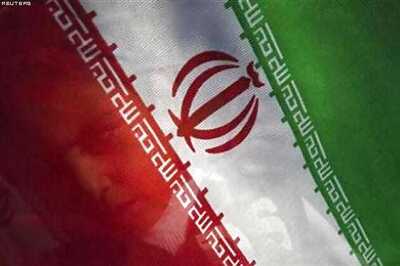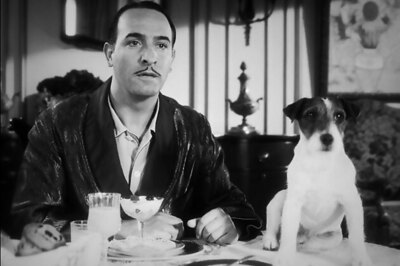
views
It’s the season and I have not been invited to a single wedding. This could well be because all my friends are happily married (I hope) and their children are not of marriageable age (as yet). Then my editor asked me to do this piece. I immediately said yes. This way I can vicariously attend not one but many weddings.
In 2019, a national newsmagazine commissioned me to do an interview with Ruskin Bond. He was turning 85. The magazine put me in touch with their photographer in Dehradun, which is also where I live. We linked up, booked a cab and went up the hill to meet the great man, who was cosily ensconced in his room on the roof. On the way back, the photographer’s phone wouldn’t stop ringing. “Busy man,” I said, “But who’s calling you?” He told me that he was a wedding photographer; the work he did for the venerable magazine was a prestige gig that didn’t pay much. It was the month of May, traditionally packed with auspicious dates (no, not the dry fruit, but that too), the busiest time for him.
A few days later I went to Delhi, only to discover that a relative who’d trained as a doctor had changed professions and switched to being a wedding photographer. He’d even found his life partner at a wedding he was shooting. Towards the end of the year, I found myself at my parents’ apartment in Allahabad. Mohan dropped in with a pile of ironed and starched clothes. Mohan was our family dhobi; he’d known me ever since I was a baby. I asked him about his son whom I’d not seen for years. He said that the son was doing really well — he’d become a wedding photographer.
That day I realised I’d chosen the wrong vocation. Wedding photography, cutting across class lines, seemed to be the thing to do. No one told me this when I was growing up. It’s going to haunt me for the rest of my life. As I came to learn, there are areas of specialization within wedding photography: drones, pre-wedding, honeymoon. The young man who’d accompanied me to Ruskin’s home was an expert in honeymoon videos.
Earlier, couples would come to Kempty Falls in Mussoorie, strike some filmy poses – the arms outstretched ‘Titanic pose’ being the most popular – and take back a honeymoon album of snaps. Every album looked the same. The photographers on Mall Road did good business. Now, as my new friend informed me, the honeymoon trend was to travel abroad. ‘Muss’ was old hat. When the newlyweds hopped on a plane to Bangkok, leaving the madding shaadi crowd behind, he hopped on the plane with them. When they checked into a hotel in Phuket, he checked in too, all expenses paid.
Like with any profession, there is a ladder of success. While my man in Dehradun is thriving, there are others doing better. Last year, The Economist introduced us to a groggy Vishal Panjabi. When the magazine’s reporter calls him on the phone, Panjabi, for a second, can’t remember where he is. “I’m in Cannes, before that Barcelona and before that Dubai, London, Udaipur, Delhi, Chennai and Bangalore. Now off to Charlotte, North Carolina and then the Napa Valley.” Panjabi, we are told, “makes intricate wedding videos for Indian nuptials.” His “expanding workforce includes set designers, sound and light engineers, composers, video editors, even script writers.” Ah, scriptwriters! There still might be hope for me.
Jokes apart, weddings are serious business. According to Timothy Chi, global chief executive of The Knot Worldwide, which runs the wedtech platform WeddingWire India, one in every four weddings worldwide happens in India. According to Sanjeev Khandelwal, secretary general of the Confederation of All India Traders (CAIT), the total annual spending on weddings exceeds $130 billion. By this estimate, wedding is our fourth largest industry, behind energy, banking and insurance, but ahead of cars, steel and technology.
The average Indian spends almost 20 percent of total accumulated wealth on a wedding. Besides being fairly recession-proof, the industry is supposed to grow at about 30 percent per year. At least 34 percent of India’s population is between the ages of 20 to 39, and close to 10 percent is between the ages of 15 to 19, who will join the marriage-appropriate demographic age group in the next five years.
At the time of writing, we are in the middle of what’s being called India’s biggest wedding season yet. Beginning Dev Uthan Ekadashi on November 23 to December 15 (the next phase is from mid-January to July), 3.5 million weddings of all shapes and sizes are expected to generate business worth Rs 4.5 lakh crore, with 3,50,000 weddings slated for Delhi alone. The CAIT Research & Trade Development Society survey estimates a flow of about Rs 4.25 trillion in “wedding-related purchases and services”.
Business Standard provides us with a list of these “purchases and services”: “House repairs, painting, jewellery, sarees, lehenga-chunni, furniture, readymade garments, footwear, wedding cards, dry fruits, sweets, fruits, worship items, groceries, food grains, decoration items, home décor, electrical appliances, gift items, banquet halls, hotels, open lawns, community centres, public parks, farmhouses, tent decoration, flower arrangement, catering, travel services, cab services, photography, videography, music bands, orchestras, DJs, horses for processions, lighting and event management.” It’s a comprehensive list to which let me add one more “item”: fireworks. As you can see, it all adds up. If we had weddings round the year, India would become a viksit economy overnight.
The old-fashioned wedding is still around. Those who cannot afford foreign shores (which is most of the country), hit the streets. The shaadi band members always look a little sad, as they shuffle along in single file like tired robots. The dancing aunties are right up front; the drinking uncles bring up the rear. The car-o-bar follows at the end of the procession, along with the generator. While passing through a crowded neighbourhood, someone inevitably pulls out a gun and fires in the air killing a curious onlooker peeking down from his balcony.
On the other side of the scale, we have destination weddings. The stakes are higher here. I attended one in Udaipur where I stumbled upon an interesting factoid. The groom has three options to make an entry: Elephant, horse and camel, with the elephant costing the most. The camel is the cheapest alternative except that the groom would rather take an Uber than arrive on a camel. It’s bad optics.
The record for the highest Indian destination wedding belongs to Sonam Babani, fashion influencer, and Neil Sanghvi, a businessman. It took place in the ski resort town of Zermatt, with the majestic Matterhorn peak providing the backdrop. The mandap was located at a height of 2,222 metres, a record that is going to stand tall for some time. It’s not clear if the guests did any actual skiing.
The award for the most nerdy desi wedding is held by the couple who decided to get married in the National Museum of Qatar. It’s not clear if the guests actually looked at any exhibits on display.
The most-desired-for-wedding award goes to the Virushka wedding in Italy.
Siddharth Sharma is the founder of House on the Clouds, a wedding photography and filmmaking company based in Bengaluru. He specialises in celebrity weddings. He says that most couples travel with an entourage of about 350 guests, but it can go up to 650. There’s a trade-off here. If you want a destination wedding abroad, you need to cut down on the number of guests. Those doing it in India can make up for the lack of exotica by inviting half the country. One wedding planner remembers an enquiry from a political family for a reception involving 1,00,000 attendees.
At least 63 percent of millennials prefer weddings organised via online platforms that offer a one-stop shop. Aditya Sharma of Weddingz.in says that post-pandemic, “a new sub segment of pax size below 100” has come into existence, even though the big fat wedding remains the norm.
But are foreign destination weddings good for our economy? PM Modi, in a recent episode of ‘Mann Ki Baat’, nudged India’s rich and famous to choose local destinations so that the country’s money does not leave its shores. To this I’ll add that India should also be wooing foreign citizens to come get married in Bollywood-themed weddings in Incredible India. Moves are already afoot with the union tourism ministry finalising contours of the “India says I Do” campaign.
There are woke Gen Zs who have raised environmental concerns. Shahrukh Khan’s daughter, Suhana, praised Alia Bhatt who wore her wedding sari to the National Awards, “I thought that was a much-needed message. She took a stand towards sustainability. If Alia Bhatt can rewear her wedding saree then we can also repeat an outfit for a party. We don’t need to buy a new outfit. Making new garments creates waste which impacts our biodiversity and environment.”
This holds true for the multiple dress changes that take place during the course of a wedding. An unsaid rule says that a bride cannot repeat the dress in which she has been photographed once. This leads to a dilemma. The wedding economy is fuelled by wasteful expenditure, which is considered necessary. If a bride decides to wear only one outfit then how will the wedding economy boom? I remember a wedding where the groom’s family, khatris from Lucknow, demanded laddus, each weighing 2 kilos, at the last minute. The demand was met. If it had been turned down, the halwai wouldn’t have gained, and the black money would have continued to languish in the pockets of the bride’s family.
Wedding trends keep changing. Who knows in the future we might see the Great State Transport Bus wedding or the Great Kirana Store wedding, but knowing my countrymen it seems unlikely. When it comes to shaadi, India will always scale up, not down.
(The writer is the author of ‘The Butterfly Generation: A Personal Journey into the Passions and Follies of India’s Technicolour Youth’, and the editor of ‘House Spirit: Drinking in India’. Views expressed in the above piece are personal and solely that of the author. They do not necessarily reflect News18’s views)















Comments
0 comment